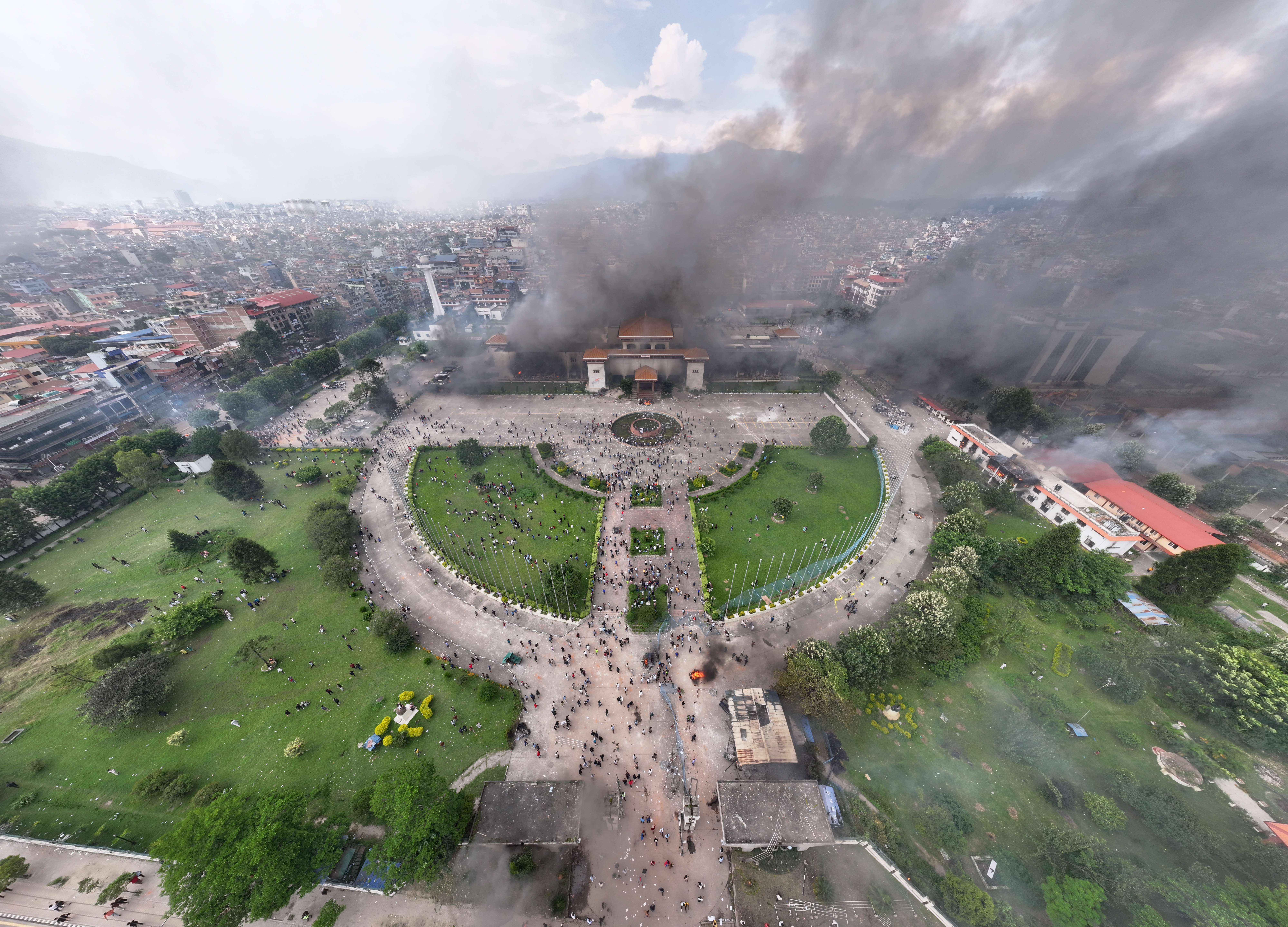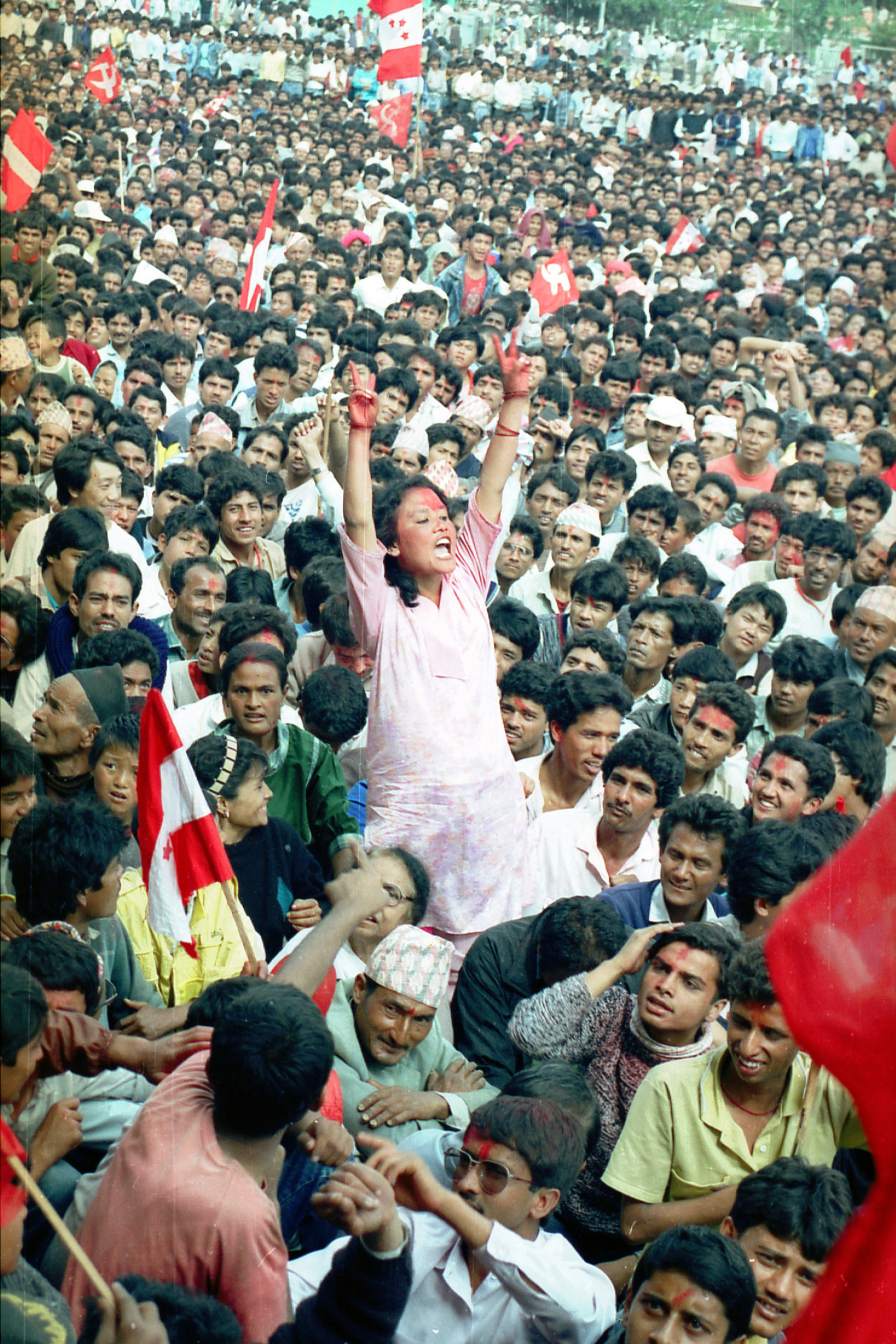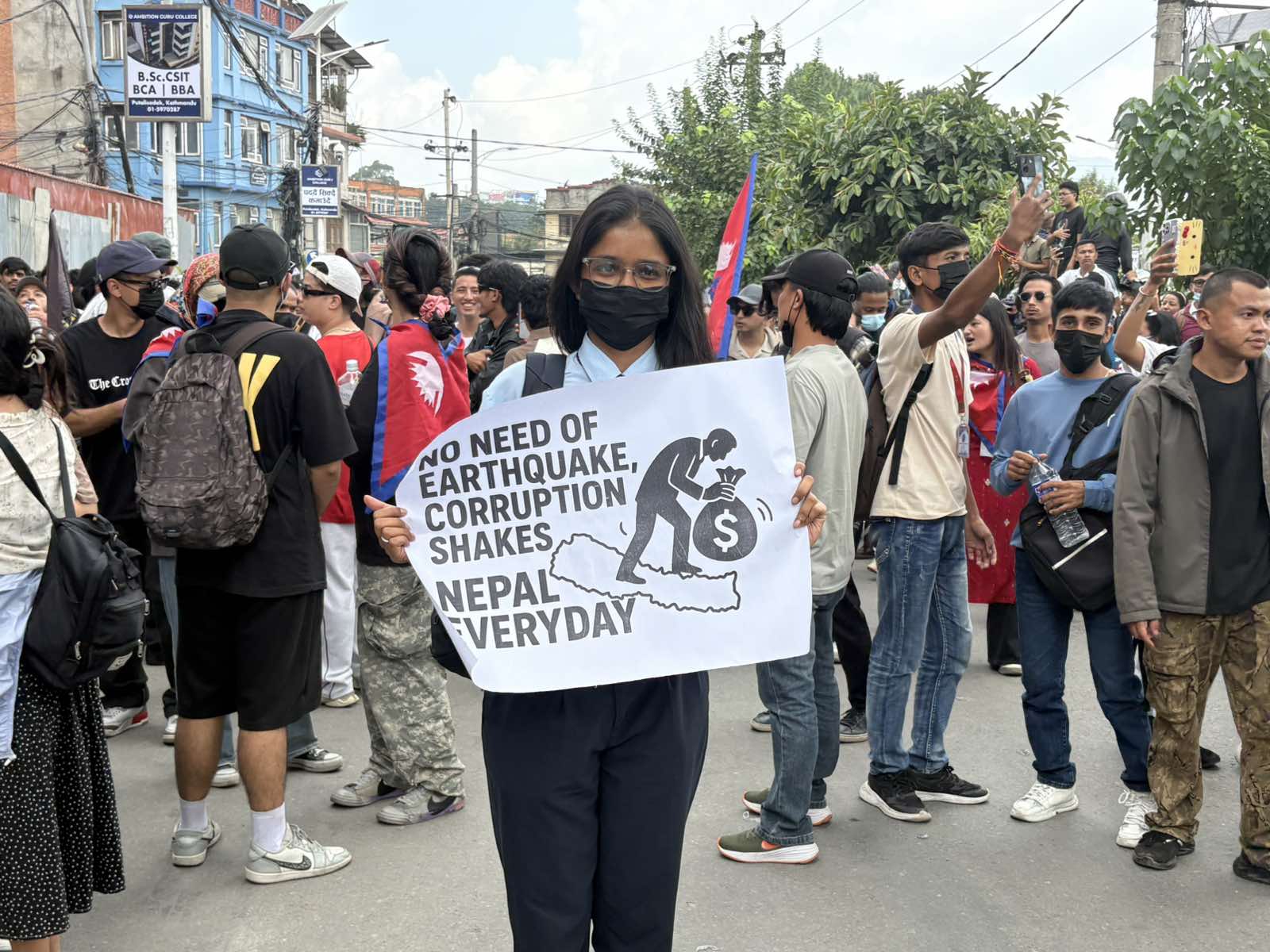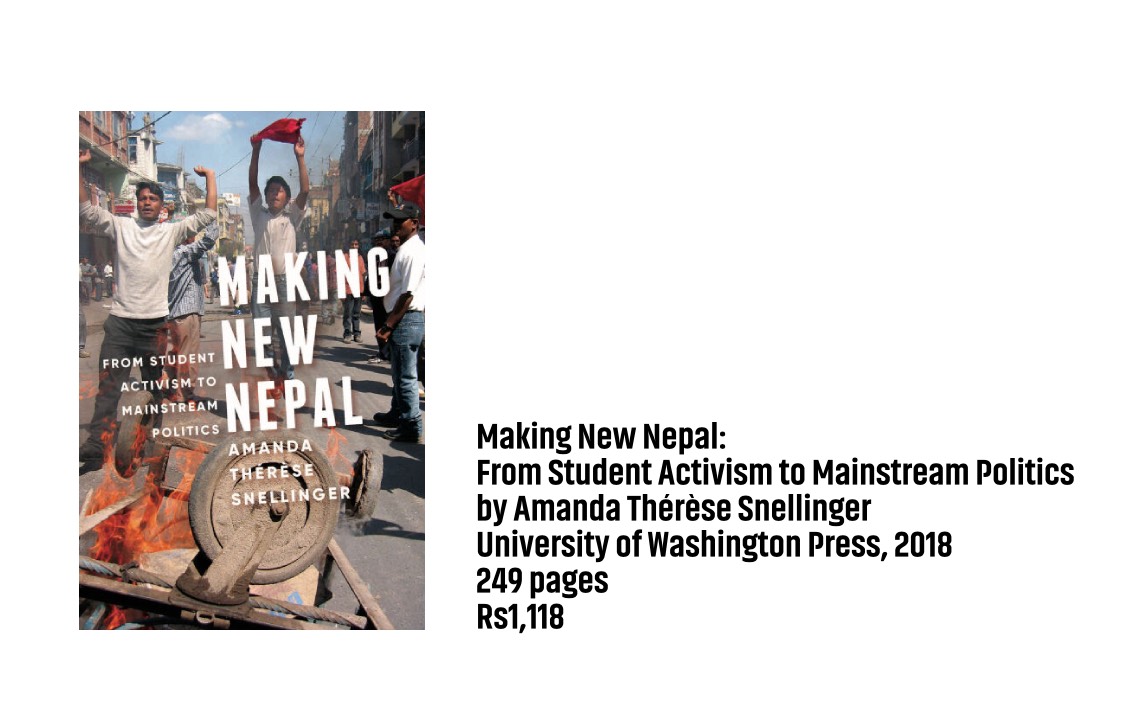Nepal’s historic youth dissensus
Ethnography that traces party-based student union politics helps explain how the GenZ emerged independently from itIn 2003, the death by police firing of a student protesting a rise in fuel prices pushed Nepal’s student activists to join the प्रतिगमन विरोधी आन्दोलन (Movement Against Regression), which political parties had begun after king Gyanendra’s sacking an elected government a year before.
The students’ participation elevated the movement and prompted more Nepalis to join in, leading to the People’s Movement that first sidelined the monarchy and then abolished it in 2008.
That took five years to happen. But 12 years later, this month, a youth-led protest forced the prime minister to resign within 30 hours.
Police massacred GenZ activists, many of them students, outside Parliament on 8 September. This intensified public anger, leading to targeted attacks, looting, and burning of the homes of political leaders, private businesses, and public buildings.
Amid the smouldering ruins of state institutions, young Nepalis chose a new prime minister to lead an interim government and deliver a fresh mandate. All of this happened in five days.

Students have been central to Nepal’s democratic and political process since the mid 20th century. In her 2018 book Making New Nepal, researcher Amanda Thérèse Snellinger traces the history of student activism and politics against a background of Nepal’s socio-political history and party politics.
Snellinger examines the interplay of ideology and identity, explores how student activists fit into a political landscape continually occupied by the traditional elite, and details how student leaders have established themselves through relationships with influential actors on local, national, regional, and transnational levels.
The Rana regime’s repression caused students to be politically aware. In 1947, students held the first organised protest against the Rana autocracy demanding educational reforms.
The breadth of student activism expanded during the Panchayat era after king Mahendra banned political parties, which drove mainstream politicians and parties underground. Student activists then became proxies for multiparty democracy because they were still able to organise.
Student politics was institutionalised, and unions emerged as vanguard sister organisations of political parties. Student activism, more so than mainstream political parties, played key roles during both major movements in 1990 and the 2000s, as they mobilised the citizenry to join the democratic process.

Through extensive ethnographic research between 2003 and 2015, Snellinger investigates the political coming of age of student activists during the final years of the armed insurgency and their role in and beyond the movement that ultimately abolished the monarchy.
Her research revolves around the political journeys of five student activists: Akash and Rishi from the Nepali Congress (NC) student wing Nepal Student Union (NSU), Salini from the UML’s All Nepal National Free Students’ Union (ANNFSU-Akhil), Gyanu from ANNISU-Revolutionary of the Maoists, and Lagan, who began his political journey from Nepal Majdoor Kisan Party’s student wing Nepal Krantikari Bidyarthi Sangathan.
The ‘movement against regression’ in 2003 served as the entry point for activists into national party politics. Indeed, it was their participation in the movement that elevated the profile of the main subjects of Snellinger’s research.
In the years that followed, the paths of the five activists diverged. Some made it into mainstream politics, even becoming lawmakers. In doing so, they have had to trade idealism for pragmatism, and their attempts realise their previous vision for Nepal’s democracy have been overshadowed by their political opportunism and position.
And even decades after they began their journey as student activists, the generation that the book focuses on are still considered ‘youth’ leaders. Snellinger quotes a former student leader who joined mainstream politics as saying: “I am still a youth because my aspirations remain unfulfilled.”

Meanwhile, the refusal of Nepal’s octogenarian leaders to retire (even after The upheaval this month) has created a surplus of younger adults waiting in the wings, making the word ‘youth’ relative in Nepal’s political trajectory.
Other subjects of Snellinger's research have retreated from student and mainstream activism, either in disappointment over their mother party’s retreat from some of their more radical positions, or to continue their work at the community level through education and journalism. One of them has leveraged her political connections to further women-led initiatives after unsuccessful election bids.
Nearing the end of her research in 2015, Snellinger observes the disappointment of Madhesi communities whose movement to demand more inclusive provisions of the draft Constitution had gone in vain, even after 45 lives were lost.
As the Constitution was promulgated in 2015, TVs were switched off in the Tarai, and there were sighs of resignation. In Kathmandu, Snelllinger noted that the student leaders that entered mainstream politics protesting for inclusive democracy had little empathy for the struggles and similar demands of groups in the Madhes.
Despite the students’ role in ending the monarchy, Nepal’s political status quo has remained. The institutions and people that replaced the monarchy have allowed one set of Kathmandu elites to be replaced with another.
The socio-political benefits promised during the movement two decades ago have remained tightly controlled by leaders who refuse to give up their hold on power. The political system was overhauled, but without concrete reform.
It was only a matter of time before public frustration would boil over. Indeed, Snellinger concludes her book by predicting the inevitability of future movements in Nepal.
She writes: ‘Leaders emerge through the andolan … a new generation will emerge shaped by Nepal’s accumulated socio-political heritage, which they will mediate to shape a liveable present and future for themselves in their country, perhaps by continuing the movement.’
And that is exactly what happened on 8-9 September. Students marched in the streets demanding an end to corruption and impunity, but this time not as proxies of political parties.

Their desire for socio-political reform was apolitical at a time in Nepal’s history when the nation’s student organisations have weakened and lost credibility, mirroring the erosion of trust in their parent parties.
Along with party-based student unions, the Free Student Union (FSU)— the umbrella body all student unions—has lost its reputation due to corruption and embezzlement.
That is not to say there are no similarities in movements past and present. Whether political or apolitical, protests have been overshadowed by a lack of unity within the groups that spearhead movements. They have led to destruction of public and private institutions.
Leaders of youth and student movements have also had to bear the brunt of the frustration of the people they represent when there is no delivery on their demands. The academics of students have suffered because of frequent lockouts of university and college administration.
Youth andolan, whether political or apolitical, has been a rite of passage into Nepali democratic politics — dissensus is an integral part of political regeneration. It remains to be see how the fall from grace of political parties after the GenZ movement will affect their affiliated student unions.
As elections approach, student unions and youth collectives will find their own footing in Nepal’s newly emerging socio-political landscape. The youth who took to the streets are asking for a complete overhaul for political parties. Establishmentarian leaders still have not seen the writing on the wall.
NextGen leaders in their parties have been waiting for years for their turn to break through the glass ceiling. These established political actors will not go down without a fight in the run-up to March elections.
Amanda Thérèse Snellinger perhaps needs a post-script or even a sequel to her book to see how a new generation of leaders, forged by their student activism, will compete in Nepal's new political arena.

writer
Shristi Karki is a correspondent with Nepali Times. She joined Nepali Times as an intern in 2020, becoming a part of the newsroom full-time after graduating from Kathmandu University School of Arts. Karki has reported on politics, current affairs, art and culture.




